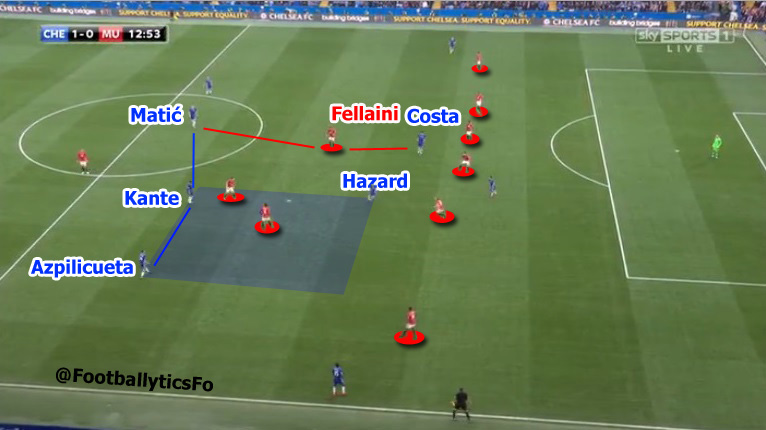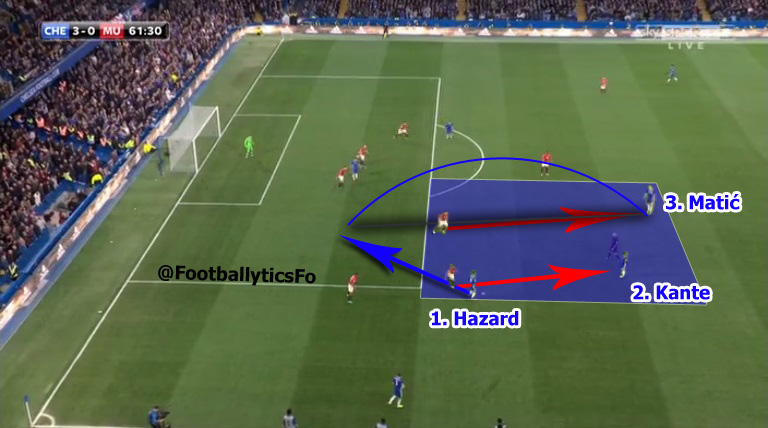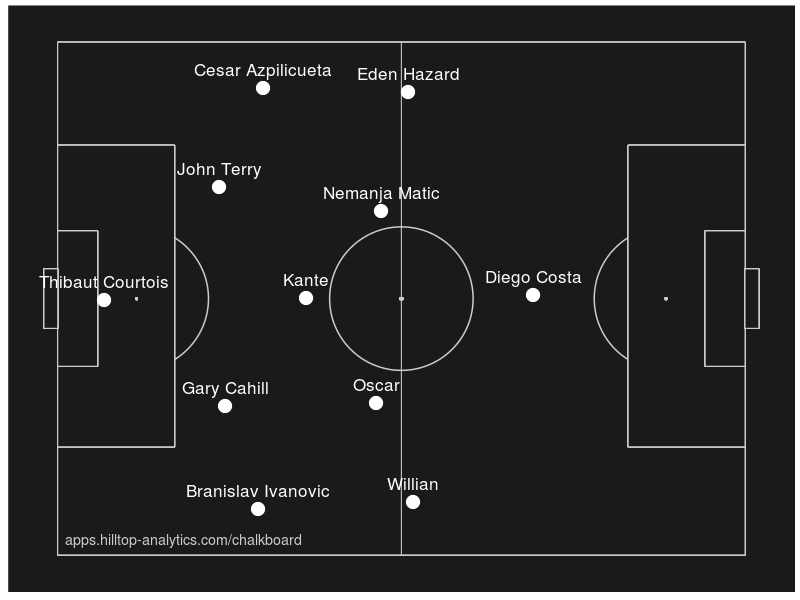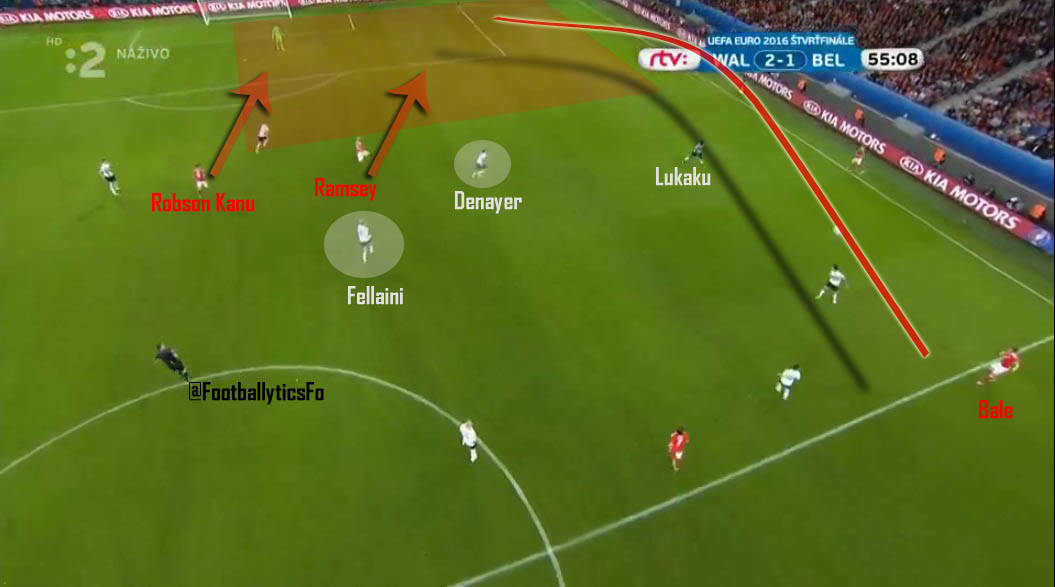The “bastard” free kick and amazing penalty save from Mignolet put a stamp on the most interesting Premier League clash of the week which ended the nightmare Liverpool was experiencing this month.
Chelsea came to Anfield at the worst moment for the hosts who barely won against a fourth division team this year. Even for that they needed second leg replay. Liverpool had lost three consecutive games, dropped out of two cups in three days and had to face the best team in country.
However, Liverpool had already beaten Chelsea this season and the good news was that Sadio Mané finally returned from the African Cup of Nations and the whole squad was fit to play. Chelsea, on the other hand, had few problems before the match. All players fit, excellent form this year with only a loss against Tottenham. While Liverpool had a lot to lose in this match, Chelsea could take it calmly, keep tight at the back and wait for their chance and that is exactly what they did.

They sat back leaving Liverpool with the ball and little idea how to break down the defense.

If we look at the same image from the Liverpool perspective we see the general idea Liverpool uses in their attacking third. Forwards (red lines) constantly change places. Coutinho is dropping back while Firmino and Lallana are more flexible and take turns in dropping deeper and making forward runs. In this instance it is Lallana who starts from deeper position and makes a run behind the defense.
Midfielders (blue lines) operate under broadly similar principle. Henderson plays as a holding midfielder while Wijnaldum and Can are making turns in forward runs from deep. In this instance, it is Can who breaks behind the Chelsea midfield line.
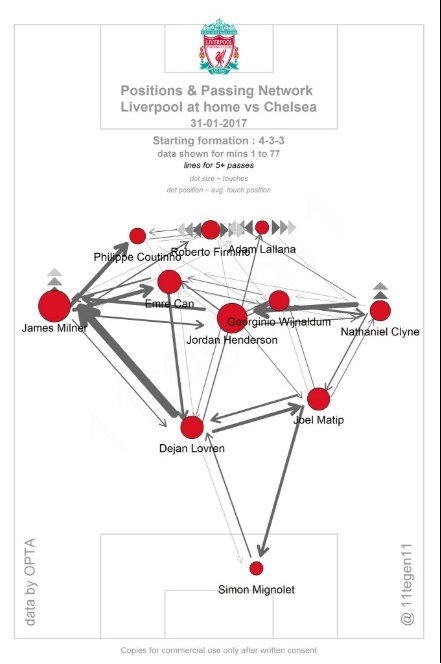
Above we see the Liverpool positions and a passing map that reveals James Milner as a link between the defense and the midfield. If you keep in mind the Chelsea formation that is quite a reasonable choice as down the flanks Liverpool has natural man advantage. However, once the ball gets to the central area, to Coutinho and Jordan Henderson, links between players perish.

If you get back to the second image, you see why as well. Eight Chelsea players are behind the ball and three most advanced Liverpool players are cut off between them. The only space Liverpool has is in wide areas and Chelsea is happy to concede in order to keep the middle of the pitch sealed off.
Note also the positioning of Diego Costa and Eden Hazard who are both high up the pitch not participating effectively in the defensive phase at the moment.
While Liverpool did well without the ball, closing Chelsea down and forcing mistakes and clearances, they had a lot of trouble getting in the goal scoring position.
However, after conceding that free kick, Liverpool was playing quicker, with more will and desire but didn’t substantialy change their approach. They were always looking to get into scoring position by outplaying packed middle.
The second half didn’t see a significant change from Chelsea but Liverpool made an important addition to their attempts to penetrate the defense.
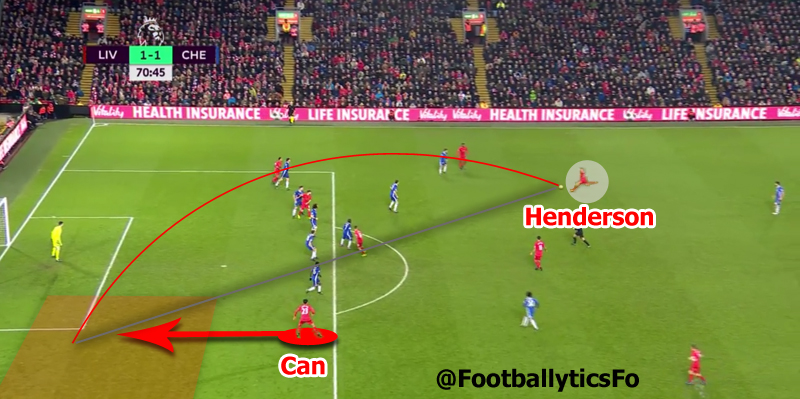
Liverpool recognized a weak spot in the zone defended by Moses and Azpilicueta. There was not only a potential height advantage when Can made his forward runs in the area, but also a weak link when Liverpool would overload the right flank and quickly shift the ball to the other side – behind the back of Moses.
This move was performed four or five times and each time it was more dangerous than anything Liverpool did in the first half.
Once Liverpool equalized the match went into the realm of will and work rate and both teams were on brink of scoring. Chelsea kept the pressure on counter attack with great help from Kante who managed 16 successful tackles (of total 29) in a match that sprung quick counter attacks. Liverpool, on the other hand found confidence after scoring and kept pushing.
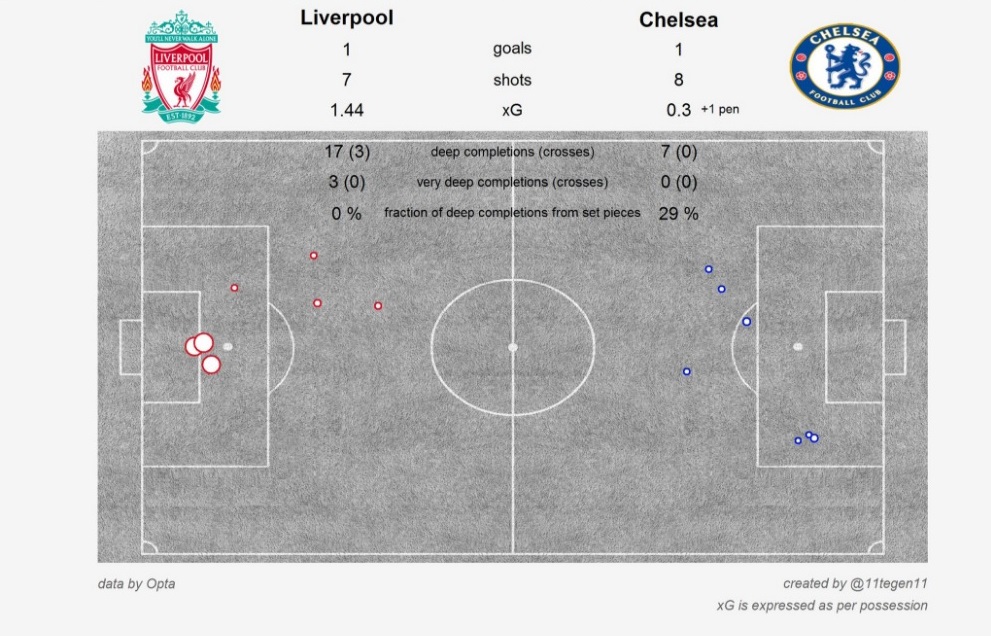
Image above expresses the expected goals from created chances. You can see that, despite everything, the hosts created much more than Chelsea with 1.44 goals against 0.3 (penalty not included). Numbers tell us that, on average game, Liverpool would certainly score a goal from created chances while Chelsea would need three matches to get lucky enough and convert one of their chances into a goal.
However, football isn’t statistics only and the situation on the pitch is heavily affected by the result. In the end, Chelsea got what they wanted while Liverpool will be happy to have avoided the fourth defeat in a row.
This analysis was first published at soccerspecific, a coaching education platform with the mission of creating and sharing the highest quality of coaching information in order to positively impact player development around the world.

